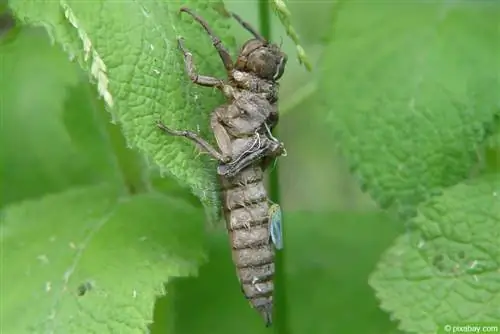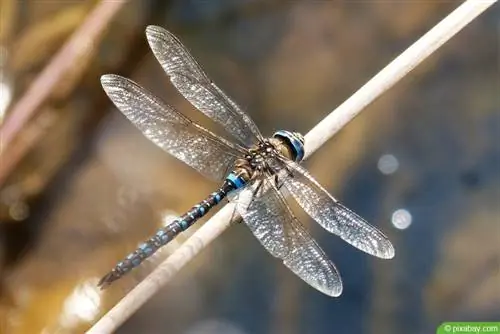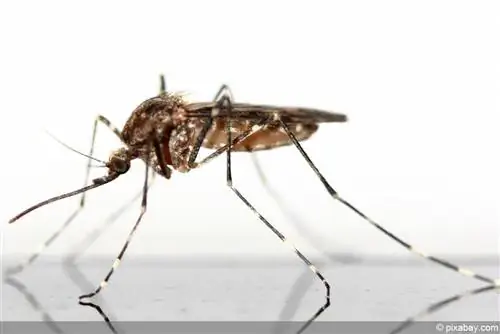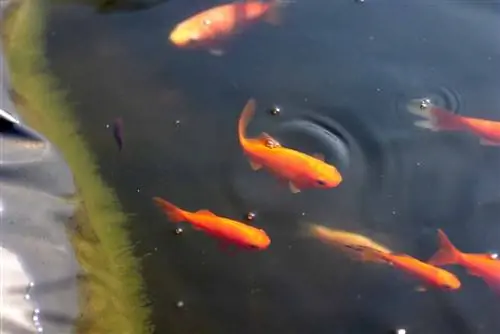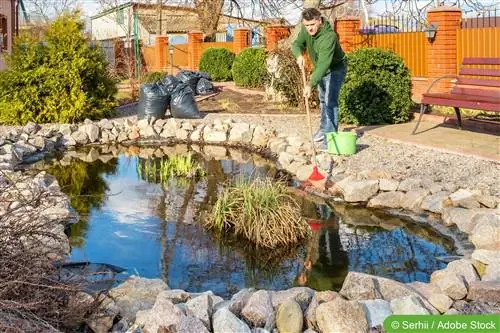- Author admin [email protected].
- Public 2023-12-17 03:39.
- Last modified 2025-01-24 12:45.
If dragonflies have used the pond in the garden to lay their eggs, on the one hand that is an advantage. The predatory insects use the larvae of other insects as prey, for example. However, their diet does not only consist of pests, but can also include beneficial insects. Nevertheless, every garden owner should be happy about dragonfly larvae in the garden pond and also set up the water body appropriately.
Nutrition in the larval stage
Mosquito larvae are the main food of dragonfly larvae. Dragonflies are therefore extremely useful even in the larval stage. They can prevent a real mosquito plague from occurring in the garden and should be welcomed into your own green space. In addition to the mosquito larvae, the diet of dragonflies in the larval stage also consists of other insects and other animals. These are:
- smaller fish
- Insects that fell into the water
- Tadpoles
- Larvae of other insects
- water fleas
- Water strider
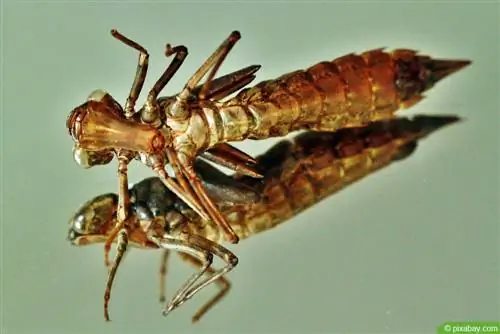
Dragonfly larvae can be harmful, especially to fish and tadpoles. However, this only affects the larvae of large species and even then they only become a potential danger when they are close to the adult stage. Even then, the preferred food is the mosquito larva, so there is no need to expect that other beneficial insects will be reduced too much. Since numerous dragonfly larvae are rarely found in a pond, there is no reason to worry.
Hunting behavior
The dragonfly larvae ambush their prey and seize it with the so-called capture mask. The catch mask is a kind of extended lower lip. Normally this cannot be seen because it is folded in when idle. She can only be seen when she is eating. Since the larvae are lurking hunters, they need the right environment in the garden pond. The design of the pond therefore plays a major role.
Food of adult dragonflies
Dragonflies have a predatory diet. This means that they eat other insects. These include, for example:
- Mosquitoes
- Gelsen
- Flying
- F alter
- other dragonflies
Eating other dragonflies may seem strange at first from a human perspective. However, it brings some advantages to the dragonflies. On the one hand, this is a simple form of food source. Since the insects, which are harmless to humans, know the behavior of their fellow insects, hunting is easier. So you have to use less energy to nourish yourself. On the other hand, the dragonflies thereby reduce their competition. This creates more favorable conditions for themselves because there are fewer predators - and at the same time they find more prey.
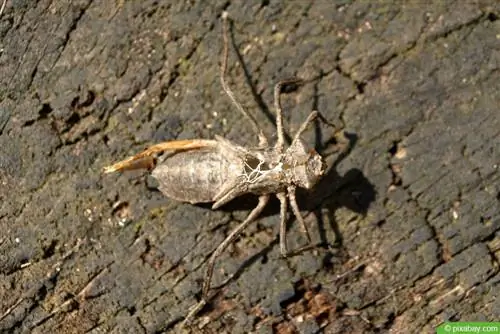
However, what is beneficial for the environment about the predatory behavior of adult dragonflies and their larvae is that, on the one hand, a balance is created. As long as the dragonflies find enough mosquitoes, flies and insects, they do not attack their own species. This prevents pests and although the pests do not die out, their numbers are reduced. This means, among other things, that further and possibly more dangerous control measures can be avoided. At the same time, the dragonflies also prevent their own numbers from increasing to unfavorable levels. Decimating other insects is also controlled and a balance can be achieved.
Reproduction And Egg Laying
Adult dragonflies have different ways of reproducing or laying eggs depending on the species. However, these are basically just two different variants.
Egg laying on the water surface
The female dragonfly lays the fertilized eggs directly above the surface of the water. The preferred storage location is the stems and leaves of shore or aquatic plants. Another variant is that the dragonflies drop the eggs. The eggs sink into the pond and remain at the bottom until the larvae hatch.
Egg-laying underwater
In some cases, the female or both females and males dive underwater and lay their eggs here. The preferred storage areas are again plants.
Tip:
In both cases it is important that appropriate plants are available. These serve as a storage place and later as protection for the larvae and as a hiding place for the lurking hunt. It is ideal to introduce different plants from the bank area to the bottom of the pond. This allows different species of dragonflies to settle in the garden pond, hide here and hunt. In addition, adult dragonflies only lay eggs if the habitat suits their requirements. This is also determined by the pond design.

